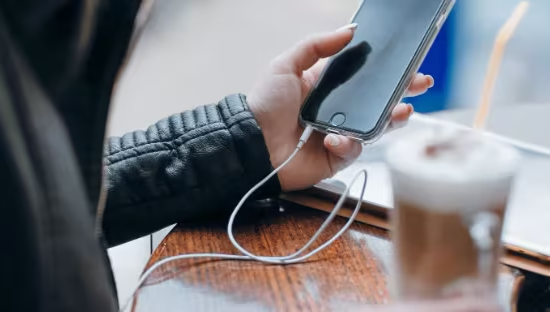
Roaming Through Time: 90s Struggles, 2000s Hacks, and Today’s Freedom
Once upon a time, using your phone abroad was a terrible idea.
Before eSIMs, before “Roam Like at Home,” before you could buy a global data plan in two taps, roaming was like ordering champagne at the bar: exciting in the moment, painful when the bill arrived. It wasn’t just expensive — it was unpredictable. A quick call could feel harmless until you saw the charges. Data? Forget it. Unless you were on a company expense account, you either rationed every minute or turned your phone off completely. And yet… we traveled, adapted, and found creative (and sometimes ridiculous) ways to stay connected.
When only “important” people roamed
In the 90s, roaming was a badge of status. If you saw someone making a mobile call from abroad, they were probably a CEO, a diplomat, or someone whose company would pick up the tab. Prices could hit €5 per minute — and that’s not even counting the charges for the person receiving the call. Regular travelers didn’t even bother. You’d jot down your hotel’s landline number and tell friends to call you. Everyone else relied on payphones, calling cards, or simply waited until they got home to share the stories. Instant communication was a dream most of us couldn’t touch.
When a flight was cheaper than a call
By the early 2000s, budget airlines had completely changed the travel game. You could hop from London to Rome for €49, drink cappuccino in the sun, and be back home the next evening. But if you made a 10-minute call while you were there? You could easily spend €30. The contrast was absurd. You’d save money on flights, hotels, and meals, only to blow it on a single conversation. People got creative — sending long, detailed emails from internet cafés, typing slowly to make every paid minute stretch as far as possible. The message was clear: travel was cheap, roaming was not.
The two-phone shuffle
Seasoned travelers knew the trick: buy a cheap local SIM when you landed and use it in a second phone you’d brought along. That way, you could enjoy local rates without bankrupting yourself. Of course, it wasn’t perfect. You’d have to carry two chargers, keep track of two sets of contacts, and remember which phone to give to whom. Sometimes, you’d forget to switch SIMs at the right time and end up paying the roaming rate anyway. Still, it was a lifeline for those who needed to stay connected without taking out a small loan for the privilege.
Flight mode: the OG roaming plan
Then came smartphones — and with them, a new kind of danger. Early iPhones and Android devices constantly used data in the background. Even if you didn’t open a single app, they’d be syncing emails, updating weather widgets, and backing up photos — all at roaming rates. People came home to bills worth hundreds, sometimes thousands. The safest plan was simple: put your phone in flight mode the second you left the country, and leave it there until you returned. Wi-Fi at the hotel became your only window to the outside world. If you were lucky, you’d find a free hotspot in a café.
When postcards were “proof of life”
Before WhatsApp, Instagram, and instant photo sharing, postcards were the traveler’s social feed. You’d spend ages picking the perfect one, write a short note about the weather, and send it off with a stamp. Sometimes, you’d beat it home. But they had charm. You could see the joy in someone’s face when they received a card from halfway around the world. Today, you can send a live video from a hammock in Thailand for less than the stamp cost. It’s faster, yes — but part of me still misses the ritual of finding the right card in a little shop.
The in-flight roaming horror stories
Around the early 2010s, airlines started offering in-flight mobile service via satellite. It sounded futuristic — you could text, check email, even browse the web mid-flight. But there was a catch: some phones connected automatically without asking. Imagine landing after a transatlantic flight and finding out you’d racked up €1,000 just by having your phone in your pocket. Word spread quickly, and people learned to switch off their devices on planes. Airlines eventually caught on, too, adding clearer warnings and introducing paid Wi-Fi packages that made costs predictable. It was a rough learning curve, but one that probably saved countless wallets.
The EU’s “mic drop” moment
June 2017 was a turning point. The EU’s “Roam Like at Home” regulation came into effect, and just like that, EU citizens could use their phones across member states at the same rates they paid at home. You could start a call in Paris, hop on a train to Brussels, and keep talking without paying a cent extra. For those of us who remembered obsessively checking the map before calling, it was liberating. Of course, it didn’t help everywhere — step outside the EU, and the old rules still applied — but it was a glimpse of what fair roaming could look like.
From dread to delight
For years, crossing a border meant receiving a “Welcome to…” SMS with rates that made your stomach drop. Calls at €1.20 a minute. Data at €5 per megabyte. And yes, that’s per megabyte, not gigabyte. You’d immediately start toggling settings, shutting down data, and calculating how many minutes you could “afford.” Today, those texts often say, “Enjoy your domestic rates here!” and instead of panic, you smile, put your phone back in your pocket, and keep exploring. It’s a small change, but a powerful one — proof that sometimes, consumer pressure actually works.
Borders stopped mattering
Some regions, like the Balkans or Central America, are a patchwork of small countries close together. In the old days, crossing from one to another meant your phone would instantly switch networks, triggering a new set of roaming charges. A day’s journey could mean three SIM swaps, three sets of rates, and constant worry. Now, multi-country eSIM plans mean you just keep moving. You don’t even think about it — your phone stays connected, your apps keep running, and you only notice the border when you see a new flag outside the bus window.
The end of the tourist trap era
Airports used to be ground zero for overpriced SIM cards. You’d also find “free” Wi-Fi networks in cafés and hotels that came with strings attached — from slow speeds to shady data harvesting. Tourists were easy prey. But eSIMs changed the game. Now, you can buy and activate a plan before you even leave home. You step off the plane already connected, without handing over your passport or digging through a wallet for cash. It’s faster, safer, and cheaper — and it means you start your trip on your own terms.
Happily ever after… for now
Roaming has gone from something you feared to something you barely think about. eSIMs made it instant. EU laws made it fair. Global data plans made it affordable. For those of us who remember €5-a-minute calls, flight-mode holidays, and juggling two phones just to stay online, this is more than just a convenience — it’s freedom. Sure, there’s still room for improvement, and outside the EU, you can still get caught out if you’re not careful. But for now? I’ll happily call it a travel tech fairy tale with a very happy ending.












